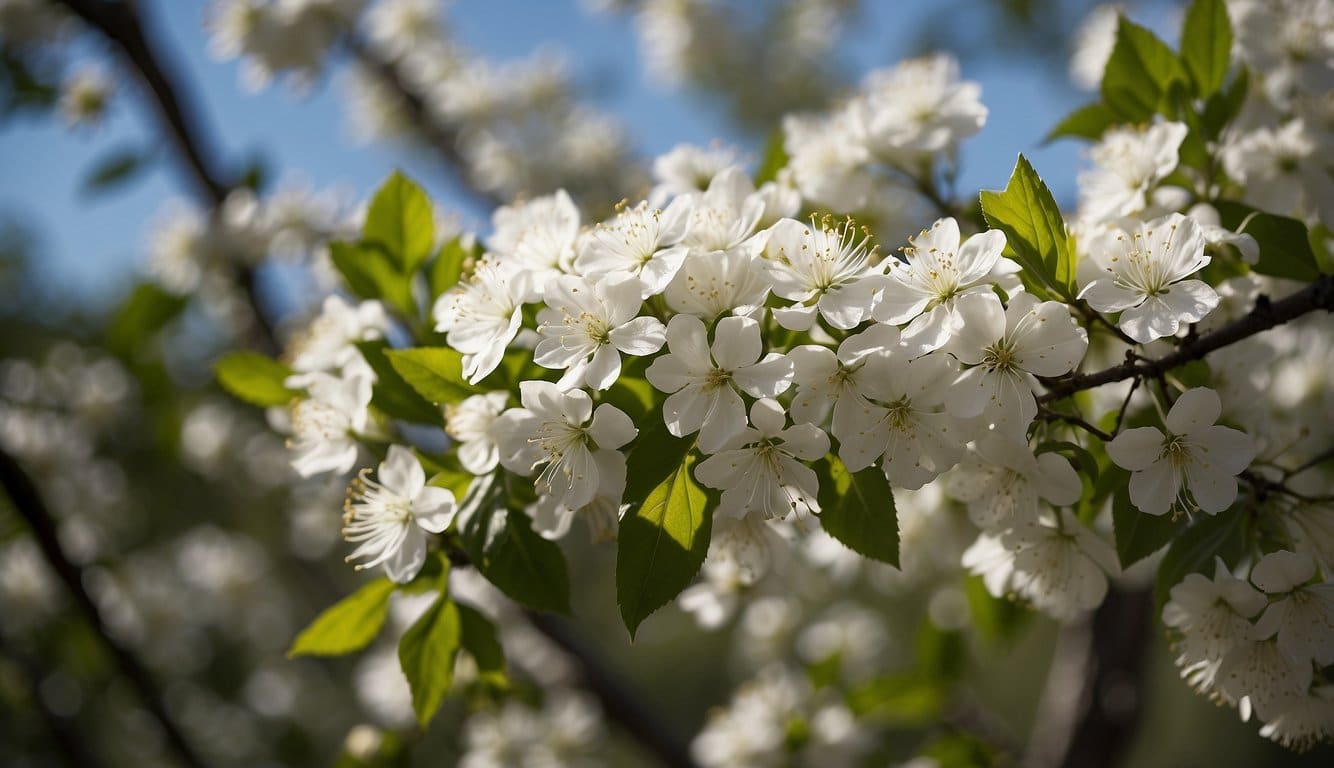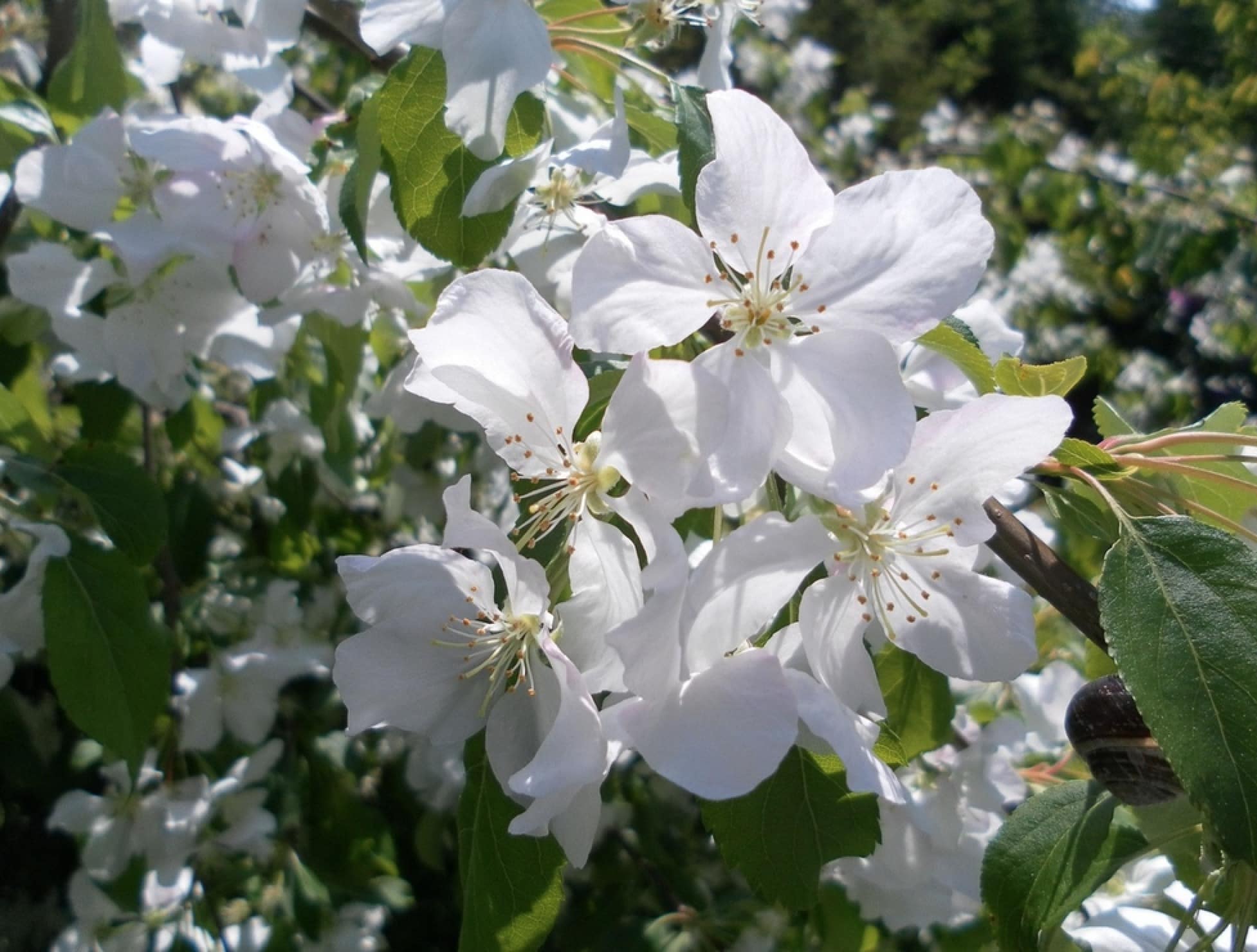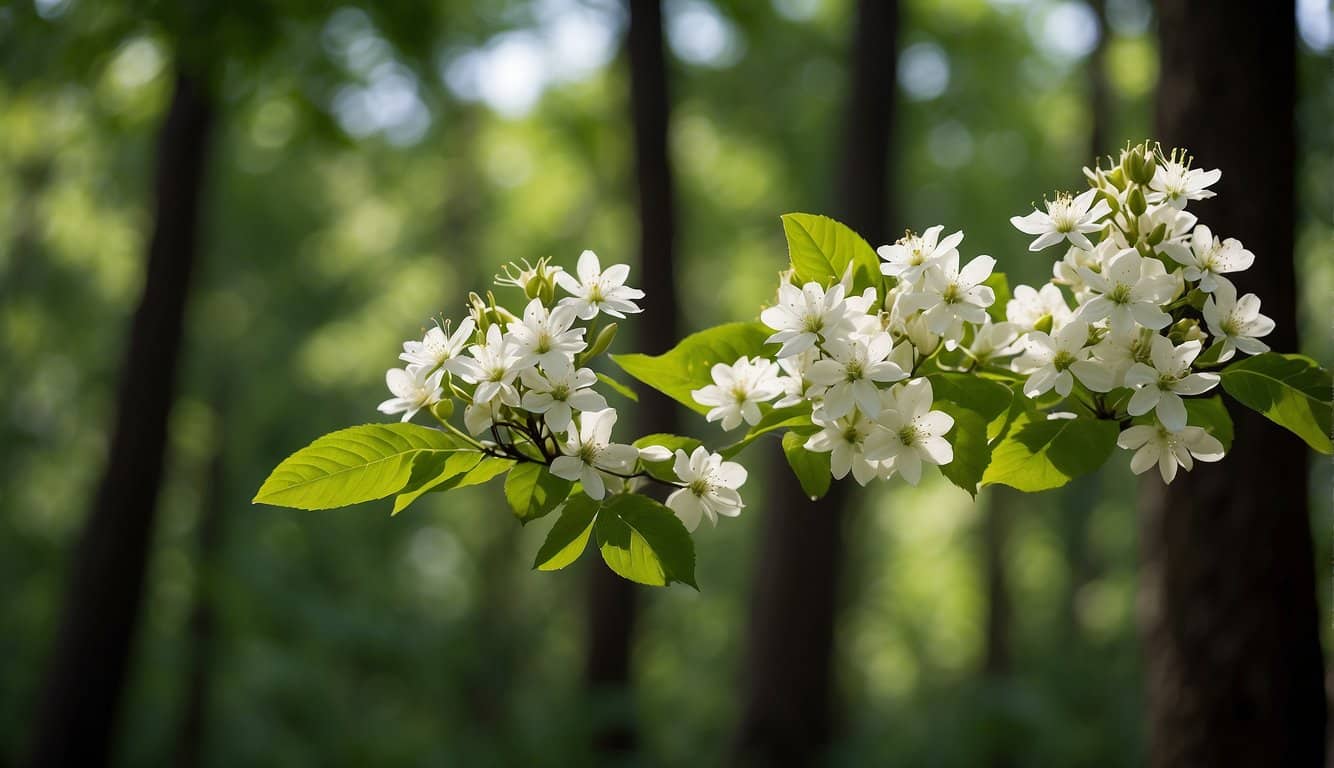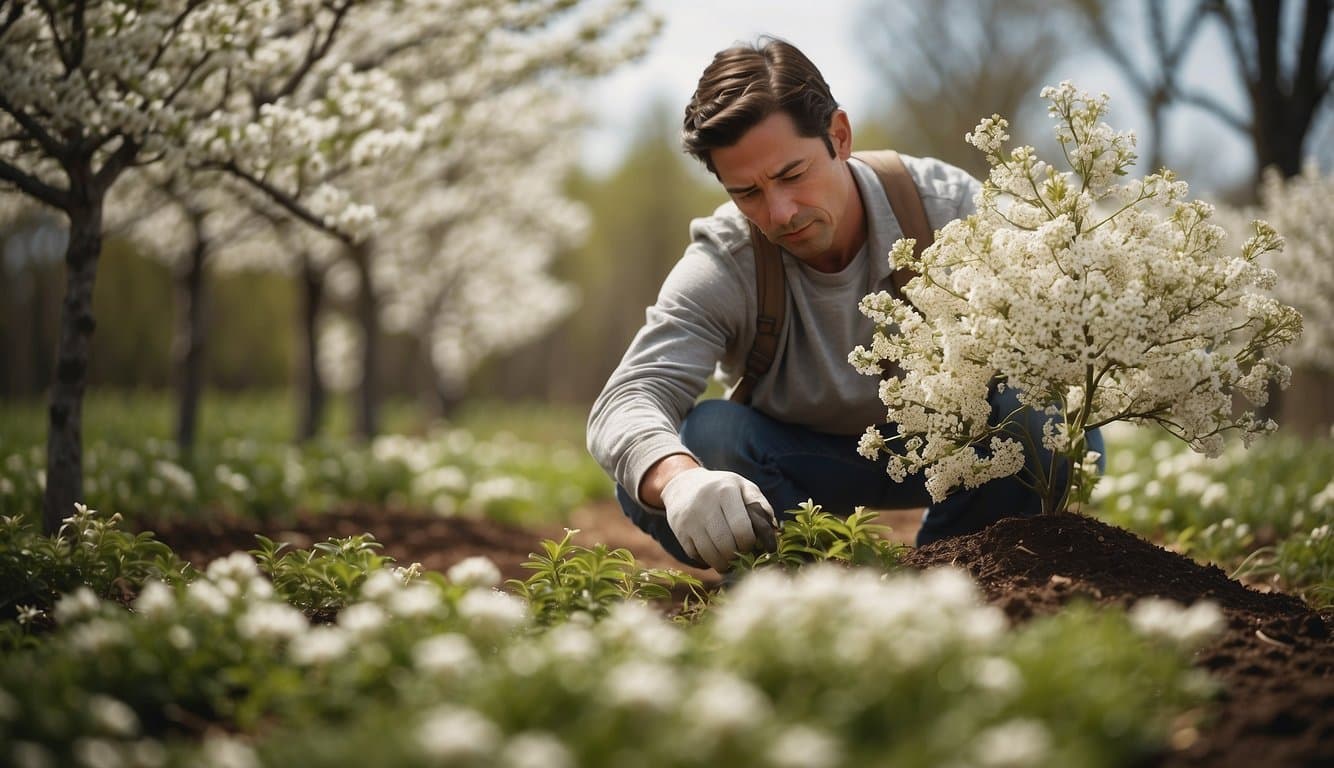Wisconsin’s landscape is graced by a variety of white flowering trees that serve as a testament to the state’s diverse ecological beauty.
From the aromatic blossoms of the Allegheny serviceberry to the grand magnolias, these trees offer a serene and aesthetically pleasing presence in both rural and urban settings.
The characteristic white flowers of these species not only contribute to the local flora’s visual appeal but also play a crucial role in supporting local wildlife and ecosystem health.
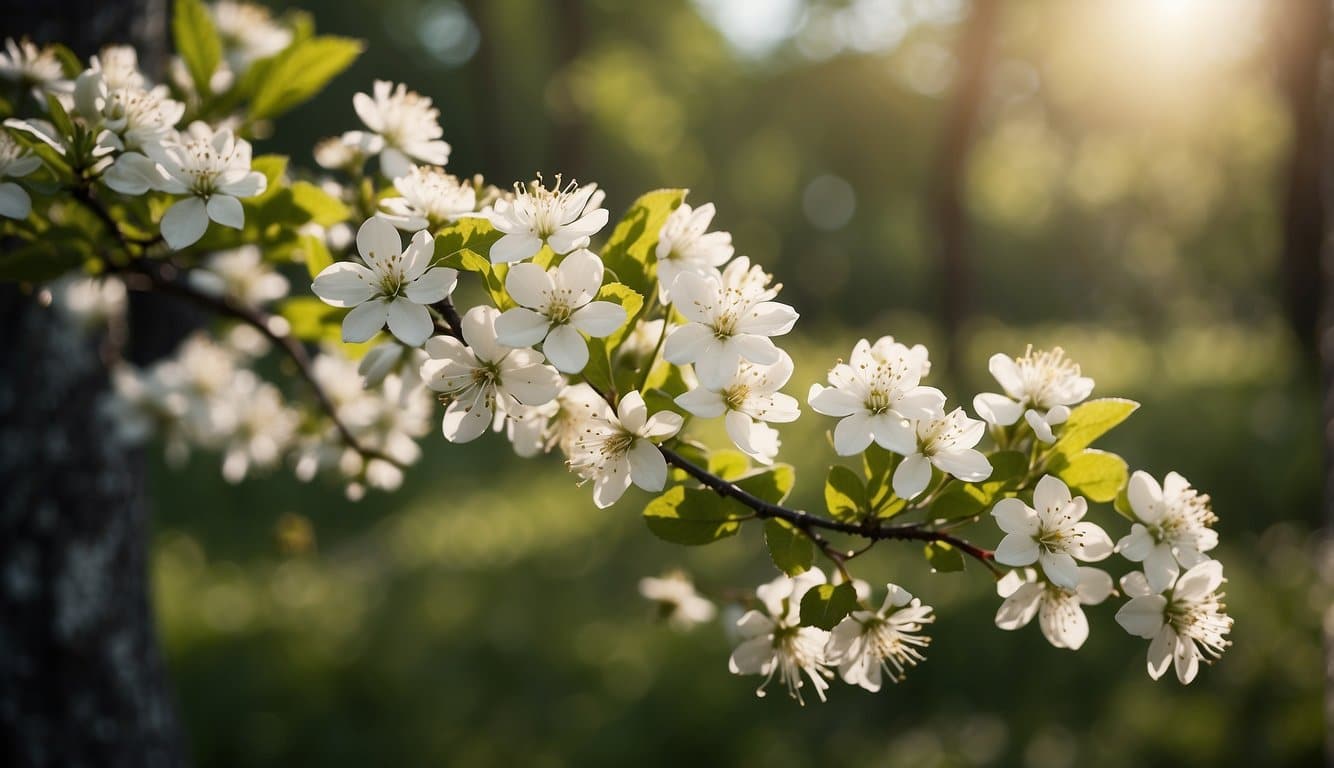
White flowering trees in Wisconsin are sought after for their distinct aesthetics, with their bloom times ranging from the freshness of spring to the more temperate days of early summer.
Gardeners and landscapers value these trees for their different shades and sizes, with choices fitting for a variety of soil types and sunlight exposures.
Adapting native and compatible non-native species can bolster garden and landscape designs, ensuring year-round interest and aligning with practical considerations such as bloom times and seasonal care.
Diversity of White Flowering Trees in Wisconsin
| Tree Species | Preferred Habitat | Flower Description | Foliage | Native Status | Additional Notes |
|---|---|---|---|---|---|
| American Dogwood (Cornus florida) | Understory in forests | White, sometimes with a pink tinge; blooms in spring | Green leaves turn red in fall | Native | Attracts birds and butterflies |
| Serviceberry (Amelanchier arborea) | Woodlands, open fields | White, delicate flowers in early spring | Green leaves turn orange-red in fall | Native | Edible berries enjoyed by wildlife |
| Eastern Redbud (Cercis canadensis) | Woodland edges, open areas | Clusters of white to pale pink flowers in spring | Heart-shaped leaves | Native | Provides early spring nectar for bees |
| Flowering Dogwood (Cornus florida) | Understory in forests and woodlands | Large, showy white bracts around small greenish flowers in spring | Red fruits in fall attract birds | Native | Excellent fall color |
| Chokecherry (Prunus virginiana) | Woodlands, prairies, along streams | White flowers in elongated clusters in late spring | Dark green leaves turn yellow to red in fall | Native | Berries used in jams and jellies |
| Hawthorn (Crataegus species) | Open woods, fields | White flowers in clusters, fragrant, in late spring | Lobed or toothed leaves | Native | Thorny, provides habitat and food for wildlife |
| Wild Plum (Prunus americana) | Open woods, prairie edges | White, fragrant flowers in early spring | Bright green leaves | Native | Edible fruits enjoyed by humans and wildlife |
| Black Cherry (Prunus serotina) | Forests, fields, and roadsides | White flowers in elongated clusters in early summer | Dark green leaves, turn yellow to red in fall | Native | Important food source for birds |
| American Plum (Prunus americana) | Woodlands, savannas | White flowers before leaves in spring | Green leaves turn yellow in fall | Native | Edible plums attract wildlife |
| Basswood (Tilia americana) | Rich woods, along streams | Creamy white, fragrant flowers in early summer | Heart-shaped, dark green leaves | Native | Flowers attract bees, excellent for honey |
Wisconsin’s temperate climate allows for a stunning array of white flowering trees that add beauty to the region’s landscapes.
Enthusiasts and homeowners can enjoy a variety of species that thrive in the state, each with its unique characteristics and charm.
American Plum (Prunus americana), notable for its white blossoms, graces the Wisconsin spring with a vibrant display.
This tree reaches an average maturity of 30-40 feet in height and spreads 15-20 feet wide, making it a suitable choice for many spaces.
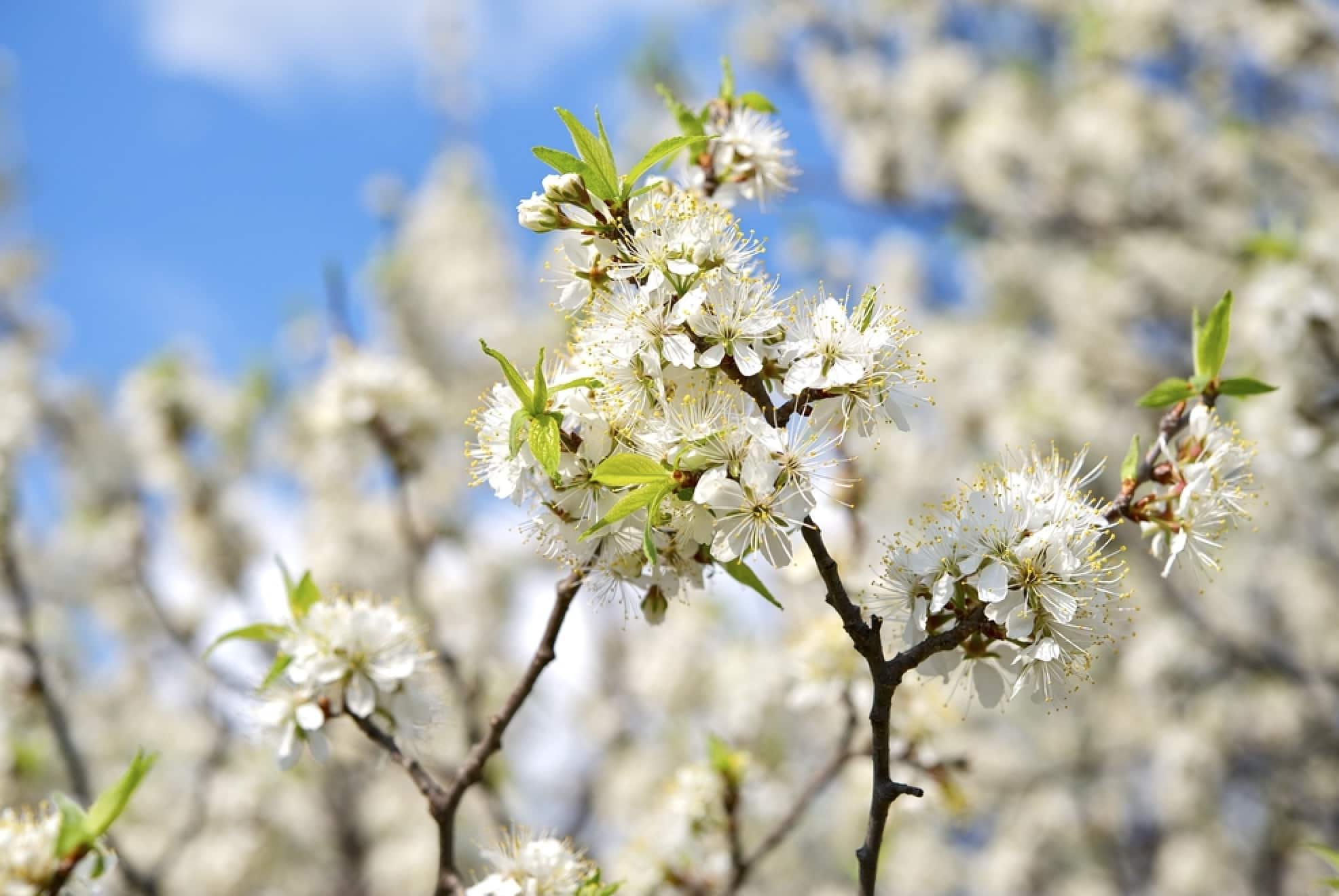
The Royalty Crabapple is another splendid option, offering not just floral brilliance but also edible fruit.
It serves as an excellent shade or street tree and maintains year-round interest, an attribute highly appreciated by residents.
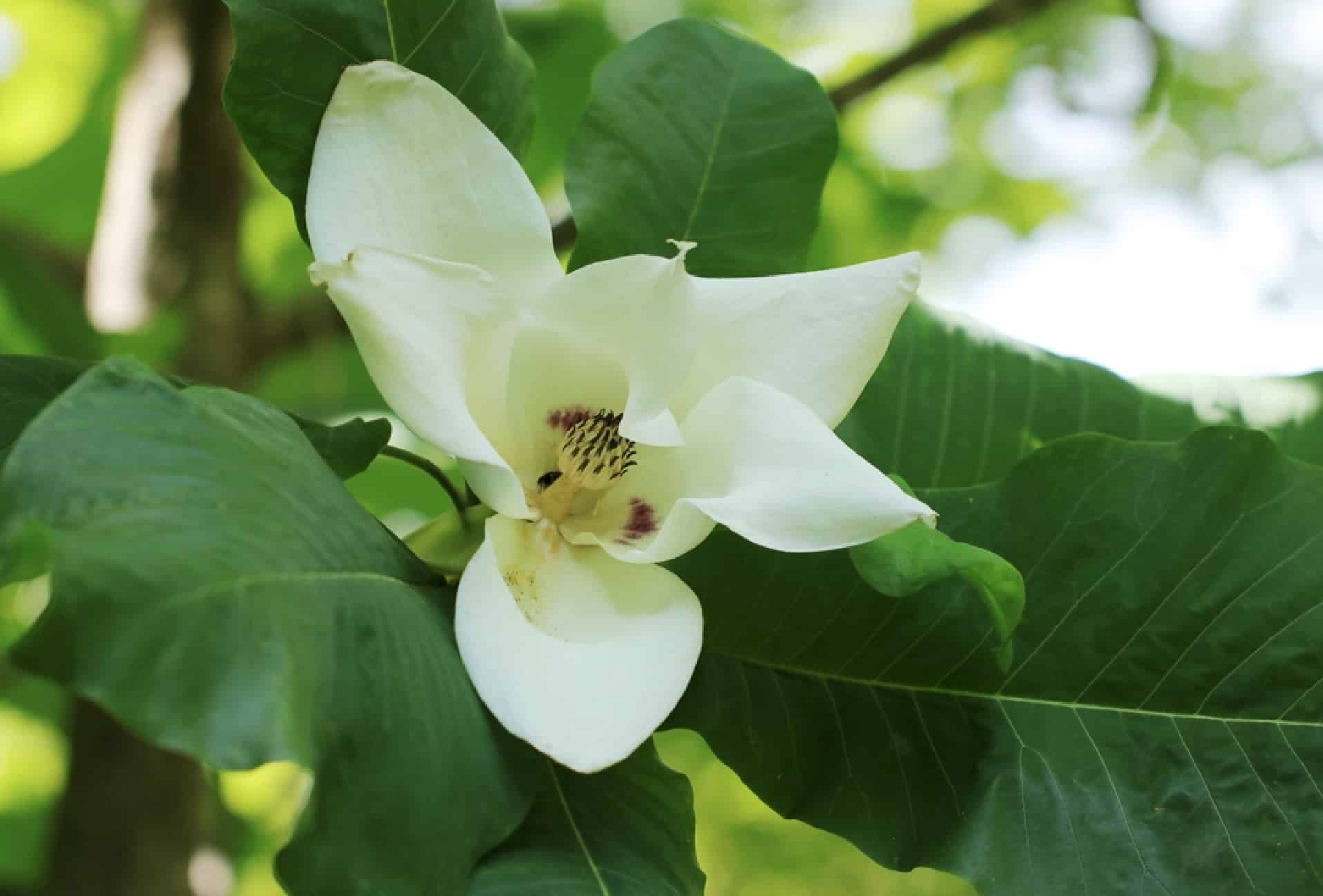
| Tree Species | Height & Spread | Flowering Season | Special Characteristics |
|---|---|---|---|
| American Plum | 30-40 ft., 15-20 ft. | Spring | White flowers, edible fruit |
| Royalty Crabapple | Varied sizes | Spring | Vibrant blooms, edible fruit, year-round appeal |
| Bigleaf Magnolia | Larger scale | Spring | Creamy-white star-shaped flowers |
Northern Catalpa (Catalpa speciosa) is another native with spectacular large white flowers that emerge later into the summer, extending the flowering season for interested gardeners.
Collectively, these trees provide habitat support, aesthetic value, and ecological benefits, such as pollinator attraction, making Wisconsin’s white flowering trees a treasured component of its horticultural diversity.
Popular Specimens and Their Characteristics
This section explores the unique features of white flowering trees that are cherished in Wisconsin gardens. Crabapple, serviceberry, and dogwood trees each bring distinct aesthetics to the landscape.
Crabapple Trees
Crabapple trees thrive in the Wisconsin climate, offering a variety of cultivars that boast spectacular white blossoms.
These trees contribute to the local ecosystem, providing food for wildlife. Most crabapple trees are known for their hardiness and ability to withstand cold temperatures, making them a popular choice among Wisconsin gardeners.
Serviceberry Trees
Serviceberry trees are adorned with white flowers that emerge in spring.
The Amelanchier laevis, for example, is a type which features aromatic white blossoms that transition into edible red to purple fruits, attracting both humans and birds alike. Serviceberry trees are appreciated for their adaptive nature and four-season interest.
Dogwood Trees
Wisconsin’s dogwood trees are known for their showy white flowers which typically bloom in the late spring.
Although dogwoods prefer partial shade, they can also adapt to various light conditions. These trees are often selected for their ornamental value and the visual appeal they add through multiple seasons, including vibrant fall foliage and attractive winter branching patterns.
Bloom Times and Seasonal Care
White flowering trees in Wisconsin offer a stunning display from early spring to summer, requiring appropriate care to thrive.
Spring Flowering
Spring in Wisconsin sees an array of white flowering trees coming to life.
The Allegheny Serviceberry blooms with aromatic white blossoms, presenting a showy display in early spring.
For a tree like the Catalpa speciosa (Northern catalpa), gardeners should note that it flowers in late June.
These trees, along with the Cladrastis lutea (yellowwood), which blooms mid-June, require well-drained soil and full sun to part shade to maximize their bloom potential.
Spring care should include:
- Mulching to retain soil moisture
- Watering, especially if the spring is dryer than usual
- Pruning, if necessary, right after the blossoms fade to shape the tree and encourage growth
Summer Maintenance
After the spring blossoms have faded, summer care is essential for maintaining the health and vigor of white flowering trees.
Regular watering during dry periods can help sustain the trees through the hot months, and applying a slow-release fertilizer can support continued growth.
For trees such as the Japanese Crape Myrtle, which boasts a longer blooming season extending into summer, deadheading spent flowers may encourage more blooms.
Pest inspections during this time can prevent infestations that stress the tree and impair bloom production next season.
In terms of maintenance activities, gardeners should:
- Water deeply once a week if there is no significant rainfall
- Fertilize with a balanced, slow-release formula suited for flowering trees
- Inspect for pests or diseases and treat accordingly to prevent spread
Planting Guidelines and Location Selection
When selecting a location for planting white flowering trees in Wisconsin, gardeners should consider both the specific species’ requirements and the overall landscape design.
Soil Conditions:
- Drainage: Well-drained soil is essential to prevent root diseases.
- pH Levels: Check for compatibility with the chosen species; some may prefer more acidic or neutral soils.
Sunlight:
- Full Sun to Partial Shade: Most white flowering trees, such as the Allegheny serviceberry, thrive in full sun but can tolerate partial shade.
Spacing:
- Ensure adequate space between trees to allow for mature growth, which varies by species.
| Tree Species | Mature Height | Recommended Spacing |
|---|---|---|
| Allegheny Serviceberry | 15-25 feet | 20 feet apart |
| Northern Catalpa | 50-60 feet | 30 feet apart |
Planting Depth:
- The root ball should be level with the soil surface, with the top of the root ball slightly above ground to allow for settling.
Mulching:
- Apply a 2-3 inch layer of organic mulch around the base to retain moisture and regulate soil temperature, but do not let it touch the trunk.
Watering:
- Newly planted trees require consistent watering until established. A deep, weekly watering is more beneficial than frequent, shallow watering.
Frequently Asked Questions
This section addresses commonly asked questions about white flowering trees that are well-suited for Wisconsin’s varied landscapes.
Which white flowering trees are suitable for Wisconsin landscapes?
In Wisconsin, the Allegheny Serviceberry and Northern Catalpa are excellent choices for white flowering trees. They both offer aromatic blossoms and can serve as attractive focal points in residential gardens or larger landscapes.
What are the common varieties of small white flowering trees found in Wisconsin?
Common small white flowering trees in Wisconsin include varieties of the serviceberry, such as Allegheny Serviceberry. These trees are favored for their compact size and clusters of white flowers that herald the spring season.
Which white flowering trees are native to Wisconsin?
The Allegheny Serviceberry (Amelanchier laevis) is a native white flowering tree known for its spring blossoms and is well-adapted to Wisconsin’s climate.
What are some tall white flowering trees that thrive in Wisconsin’s climate?
The Northern Catalpa (Catalpa speciosa) with its large heart-shaped leaves and showy white flowers is one of the tall white flowering trees that make a dramatic statement in Wisconsin’s landscape, reaching heights of 50 to 70 feet.
Can you identify white flowering evergreen trees that grow in Wisconsin?
Wisconsin’s climate does not favor white flowering evergreen trees, as the cold winters limit the varieties that can successfully grow in the region. Gardeners in Wisconsin typically focus on deciduous trees with white blooms.
What are the best practices for caring for white flowering shrubs in Wisconsin?
When caring for white flowering shrubs in Wisconsin, gardeners should ensure they are planted in well-draining soil. They should also be provided with adequate moisture, and situated in an area with full sun to partial shade to maximize health and flowering potential.
Pruning after the blooming season can help maintain their shape and encourage growth.
